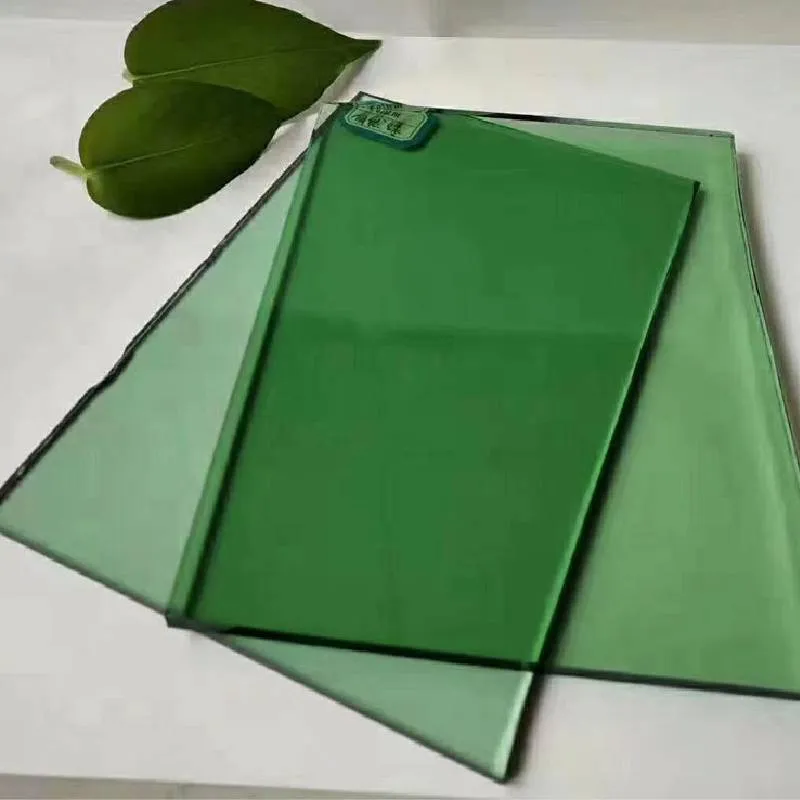Understanding Tempered Glass Properties, Benefits, and Applications
Tempered glass, also known as toughened glass, has become a vital material in various industries due to its enhanced strength and safety features. The process of tempering involves heating the glass to high temperatures and then rapidly cooling it, which significantly alters its internal structure. This article will explore the definition, properties, benefits, and various applications of tempered glass.
Definition of Tempered Glass
Tempered glass is a specially treated glass that is designed to withstand greater stress and impact compared to standard glass. The tempering process involves heating the glass to approximately 620-700 degrees Celsius (1148-1292 degrees Fahrenheit) and then cooling it quickly. This process densifies the glass, distributing internal stress throughout its structure. As a result, tempered glass is approximately four to five times stronger than regular glass of the same thickness.
Properties of Tempered Glass
1. Increased Strength The primary property of tempered glass is its increased strength. The tempering process allows the glass to resist impact better than standard glass, making it ideal for applications where safety and durability are paramount.
2. Safety One of the most important features of tempered glass is that it shatters into small, blunt pieces when broken, as opposed to sharp shards. This characteristic reduces the risk of injury, making it a popular choice for environments where safety is a concern.
3. Thermal Resistance Tempered glass is capable of withstanding extreme temperature fluctuations. It can endure a temperature differential of around 200 degrees Celsius (392 degrees Fahrenheit), allowing it to be used in situations where it is subjected to significant heat.
4. Optical Clarity Despite being treated, tempered glass maintains excellent optical clarity, making it aesthetically pleasing for architectural and decorative applications.
5. Chemical Resistance Tempered glass is more resistant to chemical corrosion compared to regular glass, making it suitable for use in laboratories and industries where exposure to harmful substances is common.
Benefits of Using Tempered Glass
The advantages of tempered glass make it a preferred choice in many applications
1. Safety and Security The inherent safety features of tempered glass make it an ideal choice for showers, doors, and windows in homes. Its ability to break into small pieces minimizes hazards in the event of accidental breakage.
tempered glass def
2. Versatility Tempered glass can be produced in various sizes and thicknesses, making it suitable for a wide range of applications, from residential to commercial environments. It can be used for glass facades, partitions, and balustrades.
3. Energy Efficiency When used in windows, tempered glass can contribute to improved energy efficiency. Its durability allows for the use of double-glazing or low-emissivity coatings, further enhancing insulation properties.
4. Design Flexibility Architects and designers appreciate the aesthetic appeal of tempered glass. Its clarity and strength enable creative designs that incorporate large glass panels and unique shapes, contributing to modern architectural trends.
Applications of Tempered Glass
The use of tempered glass spans across various industries and applications
1. Architecture and Construction Used in facades, curtain walls, and skylights, tempered glass enhances safety and aesthetic value in buildings.
2. Automotive Industry Tempered glass is widely used in vehicle windows and sunroofs due to its strength and safety features.
3. Home Interiors In homes, tempered glass is commonly used for shower doors, glass shelves, and tabletops, providing both safety and elegance.
4. Electronics The display screens of smartphones and tablets often utilize tempered glass to withstand drops and scratches.
5. Commercial Spaces In offices and public buildings, tempered glass is favored for partitions and doors, contributing to a modern, open feel while maintaining security.
Conclusion
In conclusion, tempered glass is a remarkable material that combines strength, safety, and aesthetic appeal. Its unique properties make it an excellent choice for a variety of applications across different industries. As technology advances and design demands evolve, tempered glass will undoubtedly continue to play a crucial role in modern construction and design. Its impact on safety and performance remains unmatched, solidifying its place in our everyday lives.
 Afrikaans
Afrikaans  Albanian
Albanian  Amharic
Amharic  Arabic
Arabic  Armenian
Armenian  Azerbaijani
Azerbaijani  Basque
Basque  Belarusian
Belarusian  Bengali
Bengali  Bosnian
Bosnian  Bulgarian
Bulgarian  Catalan
Catalan  Cebuano
Cebuano  Corsican
Corsican  Croatian
Croatian  Czech
Czech  Danish
Danish  Dutch
Dutch  English
English  Esperanto
Esperanto  Estonian
Estonian  Finnish
Finnish  French
French  Frisian
Frisian  Galician
Galician  Georgian
Georgian  German
German  Greek
Greek  Gujarati
Gujarati  Haitian Creole
Haitian Creole  hausa
hausa  hawaiian
hawaiian  Hebrew
Hebrew  Hindi
Hindi  Miao
Miao  Hungarian
Hungarian  Icelandic
Icelandic  igbo
igbo  Indonesian
Indonesian  irish
irish  Italian
Italian  Japanese
Japanese  Javanese
Javanese  Kannada
Kannada  kazakh
kazakh  Khmer
Khmer  Rwandese
Rwandese  Korean
Korean  Kurdish
Kurdish  Kyrgyz
Kyrgyz  Lao
Lao  Latin
Latin  Latvian
Latvian  Lithuanian
Lithuanian  Luxembourgish
Luxembourgish  Macedonian
Macedonian  Malgashi
Malgashi  Malay
Malay  Malayalam
Malayalam  Maltese
Maltese  Maori
Maori  Marathi
Marathi  Mongolian
Mongolian  Myanmar
Myanmar  Nepali
Nepali  Norwegian
Norwegian  Norwegian
Norwegian  Occitan
Occitan  Pashto
Pashto  Persian
Persian  Polish
Polish  Portuguese
Portuguese  Punjabi
Punjabi  Romanian
Romanian  Russian
Russian  Samoan
Samoan  Scottish Gaelic
Scottish Gaelic  Serbian
Serbian  Sesotho
Sesotho  Shona
Shona  Sindhi
Sindhi  Sinhala
Sinhala  Slovak
Slovak  Slovenian
Slovenian  Somali
Somali  Spanish
Spanish  Sundanese
Sundanese  Swahili
Swahili  Swedish
Swedish  Tagalog
Tagalog  Tajik
Tajik  Tamil
Tamil  Tatar
Tatar  Telugu
Telugu  Thai
Thai  Turkish
Turkish  Turkmen
Turkmen  Ukrainian
Ukrainian  Urdu
Urdu  Uighur
Uighur  Uzbek
Uzbek  Vietnamese
Vietnamese  Welsh
Welsh  Bantu
Bantu  Yiddish
Yiddish  Yoruba
Yoruba  Zulu
Zulu 

